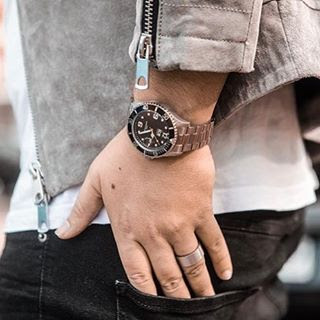Watches for Men
If you've been hoping to turn into a watch wearer yourself,
or as of now are, however, know nothing about the timepiece you fetch around on
your wrist, the following guide is for you. From weighing the upsides and
downsides of various kinds of instruments, there are different styles of
watches for men.
Watch Movements
When you start adjusting yourself with watches, a single
word that is going to come up a great deal is "movement”. The movement
incorporates not just the compass of a watch's hands around its face, but how
its internal instruments produce that impact. A watch's movement is essential
by the way it works and keeps time, think of it as the "heart" of the
watch.
Watch movements come in three kinds: mechanical, automatic
and quartz.
Mechanical
A mechanical watch has a movement that is controlled by an
origin a looped wire of metal that is twisted by hand. When the heart is wound,
it gradually and uniformly loosens up, making the recycled move in a smooth,
clearing movement around the watch's face. Most hearts are around 9-13 inches
in length. The more drawn out the origin, the more extended your mechanical
watch's capacity hold, and the more you can go between winding. Not every
mechanical movement are made equivalent. The delicate loving care and
craftsmanship that goes into a watch will decide its smoothness and precision.
Automatic
Automatic watches for men are simply like mechanical they're fueled
by a heart and utilize intricate gears to move the watch hands however, they
don't require the client to hand-wind the watch to keep it ticking. Rather,
your movement for the day wraps up the mainspring while you wear the watch.
Consequently, the name "automatic movement." They're otherwise called
"self-winding" watches.
How does an automatic movement watch self-wind? All things
considered, there's a little weight inside the watch called a "rotor"
that moves as your wrist moves for the day. It's associated with the mainspring
and winds the heart as it moves. Automatic observes additionally have a slipping
grip gadget to keep the watch from getting over-injury while you are wearing
it.
Quartz
In case you are similar to most regular people, the watch on
your wrist right currently is presumably a quartz watch. There's a purpose
behind that. Quartz watches are unimaginably precise and truly moderate. Rather
than being controlled by heart, a quartz movement utilizes power from a little
battery. The battery sends the power through a little quartz gem, making the
precious stone vibrate several times each second. The vibrations are estimated
by a circuit, which changes over the vibration into a pulse, which moves the
second hand on the watch. Since quartz watches utilize electric pulses to move
the second hand, they have an unmistakable "tick" movement.




Comments
Post a Comment